It’s been 70 years since the original, but the SL has always been deeply rooted in Mercedes’ history, spawning icons like the 300 SL, W194 race car, and often overlooked collectibles like the SL 65 Black Series.
The new seventh-generation SL Roadster makes a notable departure from the norms: gone is the hardtop roof, rear-wheel drive, optional V12 engine, and two-seater layout, and in its place are two minuscule rear seats, AMG-only trims, and, for the first time ever, all-wheel drive.

The SL is no longer catered towards old retired men looking for a golf carriage to get them through their mid-life crisis. Instead, Mercedes is tapping into the lucrative fountain of youth, injecting a few vials of performance, and is marketing their iconic roadster to the millennials. Odd, as the now elevated pricing appears to be catered towards the upper elite.

Because we’re not talking about a $100,000 price tag or even a $150,000 one. Rather, the 2023 Mercedes-AMG SL 63 4MATIC+ Roadster starts at $215,000 and stickers at $226,500 after options, indigestible if cross-shopped with the significantly cheaper BMW M8 Competition Cabriolet ($170,500) or Lexus LC 500 Convertible ($130,000). Mercedes has priced it accordingly, positioning it alongside the Porsche 911 Turbo Cabriolet ($240,300) and Aston Martin Vantage Roadster ($178,400), establishing it as the darling flagship of Mercedes convertibles, with a tech-forward, fashion-forward, and top-of-the-line appeal, backed by the performance to match. SL stands for Sport-Leicht (Sport Light) after all.
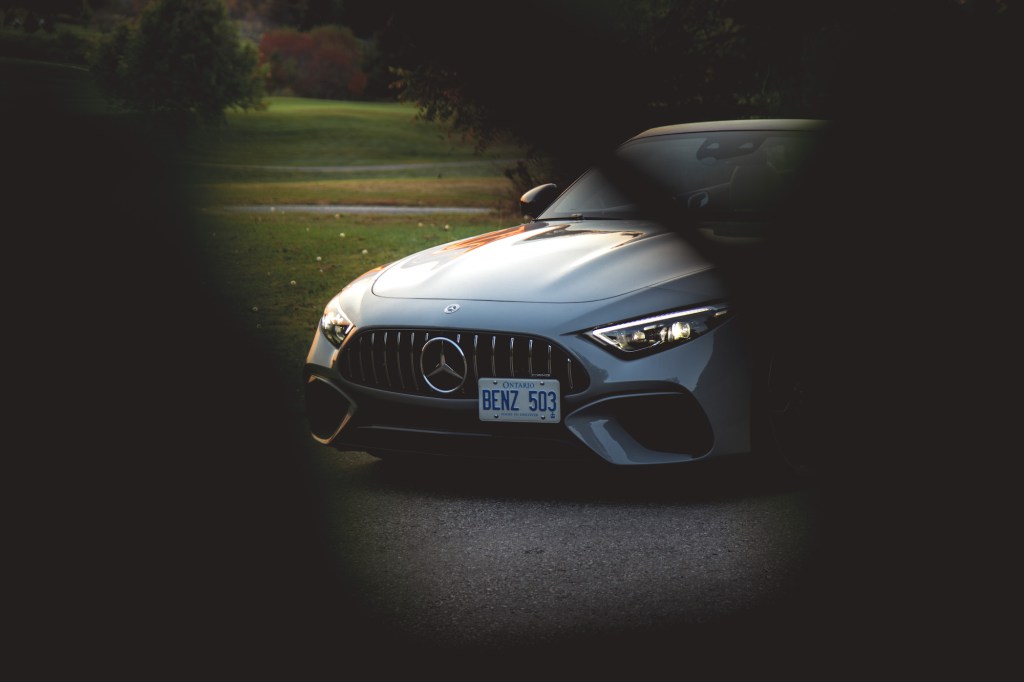
You would be forgiven for mistaking the SL for the last-generation AMG GT C Roadster. Despite Mercedes being adamant that every panel on the SL is brand new and not shared with any other Mercedes, it’s clear that many of the design cues have carried over. They look nearly identical from the rear end but the SL has sharpened up the angles and trimmed off much of the fat.

The front is slightly more distinguishable but with a slightly less exaggerated hood and shorter overhangs. The triangular headlights are an easy giveaway (more rounded in the GT) but the trapezoidal exhausts, fake vent above the front wheels, and extendable rear spoiler don’t make it easy. We do wish Mercedes kept those straked hood vents that were a signature on the fifth- and sixth-gen SLs, though. Alpine Grey suits the body shape well but a red fabric roof instead of a black one would pair better. Still, it’s one of our favourite new shades in the AMG palette, appearing almost like a hybrid of Porsche’s Chalk and Audi’s Nardo Grey.

Speaking of the roof, it’s now a soft-top instead of a hard-top, which not only saves 23 kg of weight but also allows for more cabin and trunk space, as well as a lower center of gravity. It may be slightly less insulated from noise and weather but we couldn’t tell. The roof operates in just 15 seconds and can be utilized at speeds up to 60 km/h. The result is a cabin that’s incredibly resilient to wind buffeting. Hardly any turbulence reaches the driver even at high speeds – it’s better than the BMW M8 and Porsche 911 in this department, and the SL doesn’t need those tacky wind deflectors to manage it.

But what frustrates us is the user interface. Operation of the roof is no longer relegated to a physical switch, but onto the touchscreen display instead. You press a roof button under the screen that summons the page, and then you must run your finger across the slider and hold it there to operate. It’s a bit of a nuisance, given that the screen lags and takes half a minute to load after the vehicle is turned on. It’s like having to do a CAPTCHA puzzle every time you want to open the roof. The button response isn’t consistent either, refusing to work when we start driving and the roof is only halfway open, requiring even more finger swiping. And forget about trying to reverse park and having your passenger raise the roof at the same time. It’s not possible as the rear view camera supersedes the roof screen, and it can’t be done at the same time. We get that the SL is trying to be the avant-garde roadster with audacious new methods to invent the wheel, but it hasn’t paid off here.

That theme is carried through to the interior, which makes a notable departure from the previous SL and aligns with the design theme introduced by the current generation of silver stars. It doesn’t dazzle with upscale materials like the S-Class Cabriolet, but it’s got a logical dashboard layout and an attractive suede and leather steering wheel – the same one as the lower rung AMGs like the C 43 we just drove. A shame that the airbag cover is still not leather at this price point – take a look at what BMW and Porsche are doing. It may seem like a trivial addition but it makes a world of a difference to overall cabin craftsmanship. And whatever happened to the analog IWC clock that used to come with these AMGs? Shame they got rid of them, as we thought it gave the interior a bit of extra class. It’s the reason why Porsche, Maserati, and Bentley have still kept theirs.

Mercedes has developed a novel screen-tilt mechanism for better viewing angles when the roof is up, similar to what Range Rover did with theirs, but we found the screen brightness to be effective enough that it never washed out under natural sunlight, and we never had an issue with visibility, so we never found a use for it.

The SL may appear to be a large vehicle but it feels more like a personal coupe than a 2+2. In other words, cramped. Why did Mercedes even bother with adding two rear seats that are so small that baby seats barely fit? No clue. Must be the Porsche effect. But they do make for a convenient place to throw your sweater or weekend bag. We think they should have left them out of the drawing board, expanded the cabin, and given the driver and passenger more legroom because my six-foot figure has a difficult time finding a proper seating position.

Due to the limited seat recline, I’m forced to choose between having enough legroom but a very upright seat, or a more relaxed and reclined seat, but with my feet contorted and bent close to the pedals. Admittedly, the narrow seat adjustability bandwidth is not exclusive to the SL 63, but rather to many other roadsters as well. The Porsche 718 Boxster GTS and Audi R8 Spyder have notoriously cramped cabins even without any rear seats, but they both have the excuse of a mid-engine layout. The Jaguar F-Type Convertible and even the BMW Z4 feel much roomier and better packaged for taller people, prioritizing space for the front passengers.
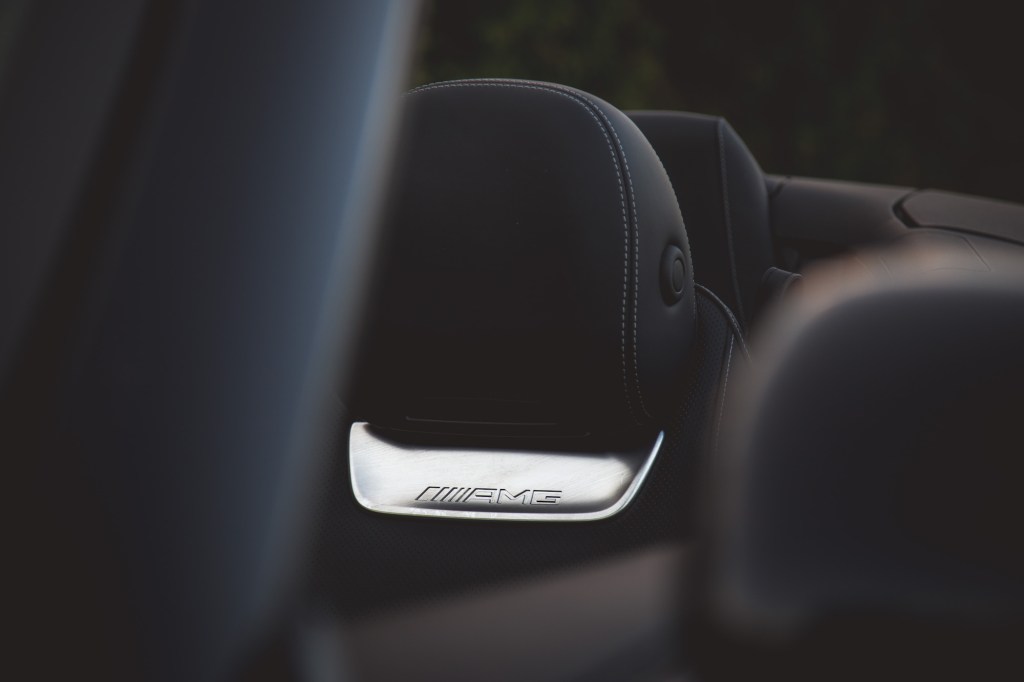
The seats themselves are snug, helpful for my slender frame, but they lack sufficient shoulder support, and those with wider frames may find them too constricted and uncomfortable. The optional AMG Performance Seats may solve this issue. Both variants come with the Air Scarf feature, a tilt-adjustable air vent below the headrest that blows hot air around your neck, extending the droptop season into the later autumn months. When paired with the heated and massaging seats, it feels like receiving a warm hug from a non-sentient being.

And then we get to the SL’s strengths. With the familial AMG GT positioned to battle the Porsche 911, the SL instead focuses on proper grand touring, consuming miles with ease without compromising its performance should a racetrack be at the destination. Up front is a hand-built 4.0-litre twin-turbocharged V8 that delivers 577 hp and 590 lb-ft of torque through a 9-speed automatic transmission. Paired with AWD, an adaptive suspension, and rear wheel steering (up to 2.5 degrees), the SL 63 will launch from 0-100 km/h in a respectable 3.6 seconds, faster than a BMW M4 CSL (3.7 s) and Porsche 911 Carrera 4S Cabriolet (3.8 s), and as quick as a Bentley Continental GTC Speed.
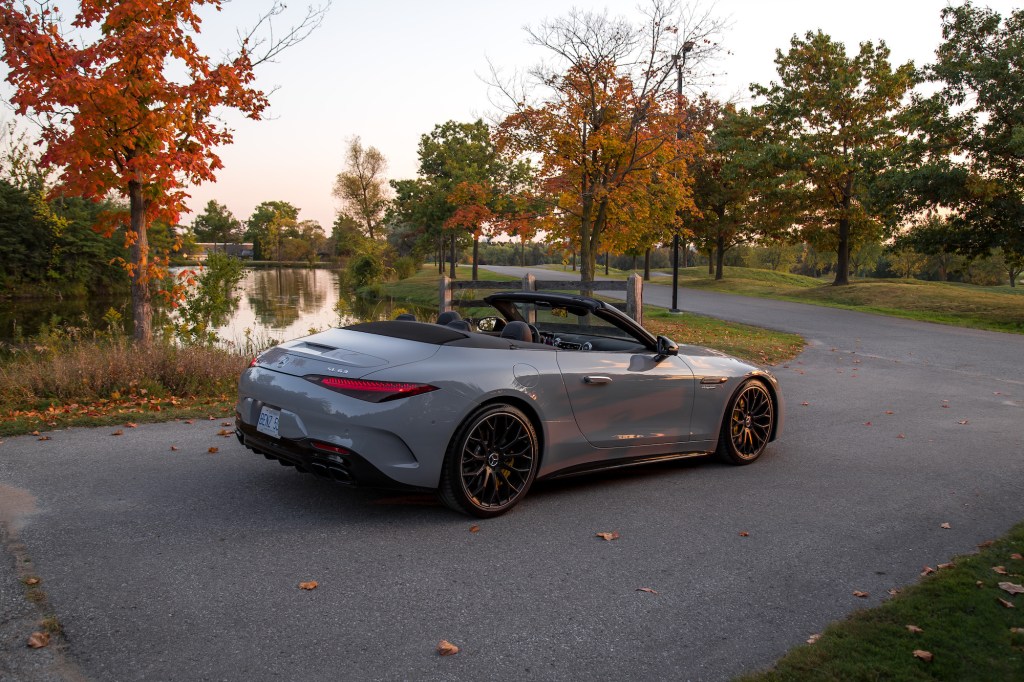
The engine is the car’s gravity and though we’re sure the six-cylinder variant (not yet available in Canada) will be just as effective for daily use, this eight-cylinder reactor delivers a much more theatrical experience. Exceptionally quick and explosive off the line, the 9-speed fires through gears with the ferocity of a dual-clutch, and without the rough edges at relaxed speeds that we experienced in the C 43 AMG. The shifts are more decisive in this gear mapping, though we did notice slightly more hesitation to downshift as the needle refuses to tick close to its 7,000 rpm limiter. And the resulting fuel economy is downright atrocious. We averaged 19.2 L/100 km with mixed city and highway driving, and it is one of the thirstiest AMGs we’ve ever driven.

After a few bouts at speed, it’s clear the SL isn’t meant to behave like a scalpel. It’s not a sledgehammer either. More of a highly configurable Swiss Army knife: it does it all despite not being the best tool for the job. The front nose is sharp but heavy, preferring to plow into understeer and relinquish all front grip before the rear even comes into play. Its dynamic behaviour is not playful or progressive, preferring a lax attitude or a fast-in and slow-out approach.
The dynamic engine mounts and electronic limited-slip differential play a significant role in reducing roll and ensuring optimal grip. The rear will only snap out if you purposefully coerce it with a heavy dose of throttle and a deliberate whack of the steering wheel. AWD and sticky Michelin Pilot Sport 4 S tires glue the SL to the floor, for better or worse. Speaking of which, the steering isn’t exactly flowing with feedback and though it’s reactive and not overboosted, it doesn’t instill the driver with a whole heap of confidence.

The SL also rides with an underlying firmness that never entirely washes away on battered city roads. The motions are fluid, and the sharpness of impacts is effectively muted out, but vertical oscillations keep the dampers busy, and you feel it hard at work from the cabin. The SL never quite feels relaxed or easily settled like in a BMW M850i Cabriolet.
While objectively inferior to a 911 Turbo if outright performance is the benchmark, driving isn’t always about shaving tenths off the quarter-mile. It’s about the journey, the revs, the way the car gels with the road and driver, and the way the steering ebbs and flows through your fingertips as the crisp autumn air stimulates your olfactory lobes. There’s nothing quite like a droptop in the autumn, and the SL 63 constantly provides this sense of occasion.
How could it not when you’re blessed with front row seats to a sonorous V8 war drum, beating and pulsing away like rolling thunder, the whooshes and hisses of boost building and a flurry of other noises that can only be succinctly described with expletives. Its vocals carry in the wind without the shoutiness of a GT R and with more restraint and maturity. In fact, it purrs to a different rhythm than other AMGs, like there’s a hungry lion stashed in the trunk, but if it had a LinkedIn profile, the SL 63 would be wearing a suit and tie, while the AMG GT R would be draped in gold chains and a leather biker jacket.

The Mercedes-AMG SL 63 has been reinvented to modern standards, providing an extra pair of token seats, AWD grip, and elevated performance, but this is not a sports car masquerading as a luxury coupe that moonlights as a track fiend. It’s further let down by a fussy roof operation mechanism via the touchscreen, a somewhat cramped interior, and a swollen price tag. Yet, while some might find it objectively inferior to many of its rivals, we think it’s subjectively superior in many areas, such as curb appeal, a wondrous V8 soundtrack, and an addictive ability to out-accelerate even the quickest sports cars. The new SL 63 isn’t an easy recommendation, but there’s definitely a role for it in the rarified air of six-figure roadsters.
Specifications:
Model: 2023 Mercedes-AMG SL 63 4MATIC+ Roadster
Paint Type: Alpine Grey
Base Price: $215,000
Price as Tested: $226,500
Wheelbase(mm): 2,700
Length/Width/Height (mm): 4,705 / 1,915 / 1,353
Engine: 4.0-litre twin-turbocharged V8
Horsepower: 577 hp @ 5,500 – 6,500 rpm
Torque: 590 lb-ft @ 2,500 – 5,000 rpm
Transmission: 9-speed automatic
Engine & Drive Configuration: Front engine, AWD
Fuel Consumption ( City / Highway ) L/100km:17.1 / 11.3
Observed Fuel Consumption (L/100km): 19.2
Tires: Michelin Pilot Sport 4 S; 21-inch















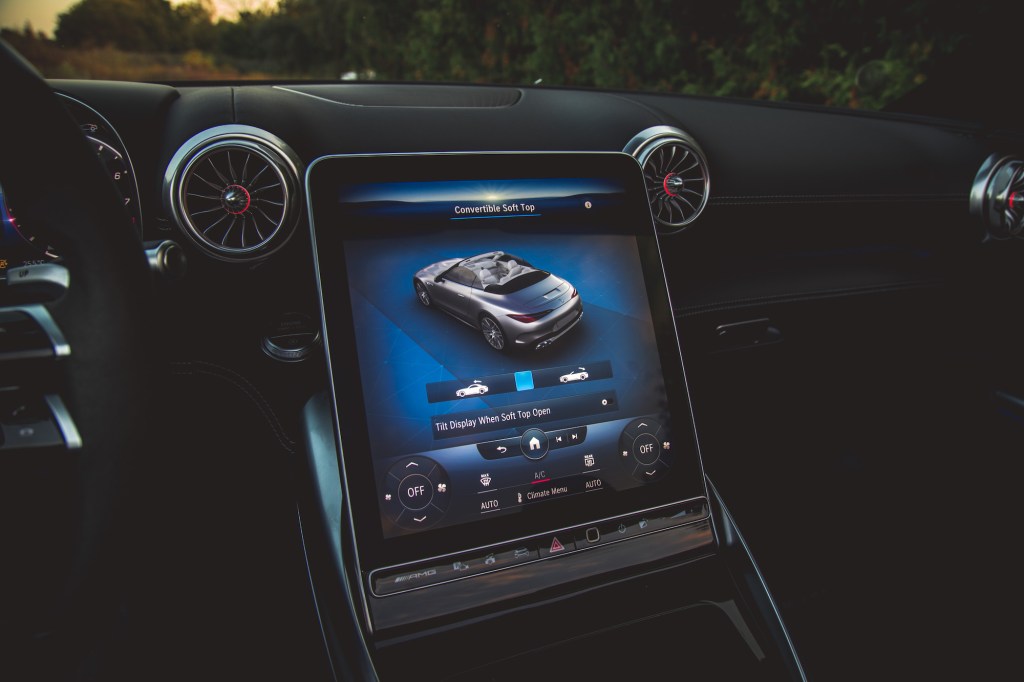





























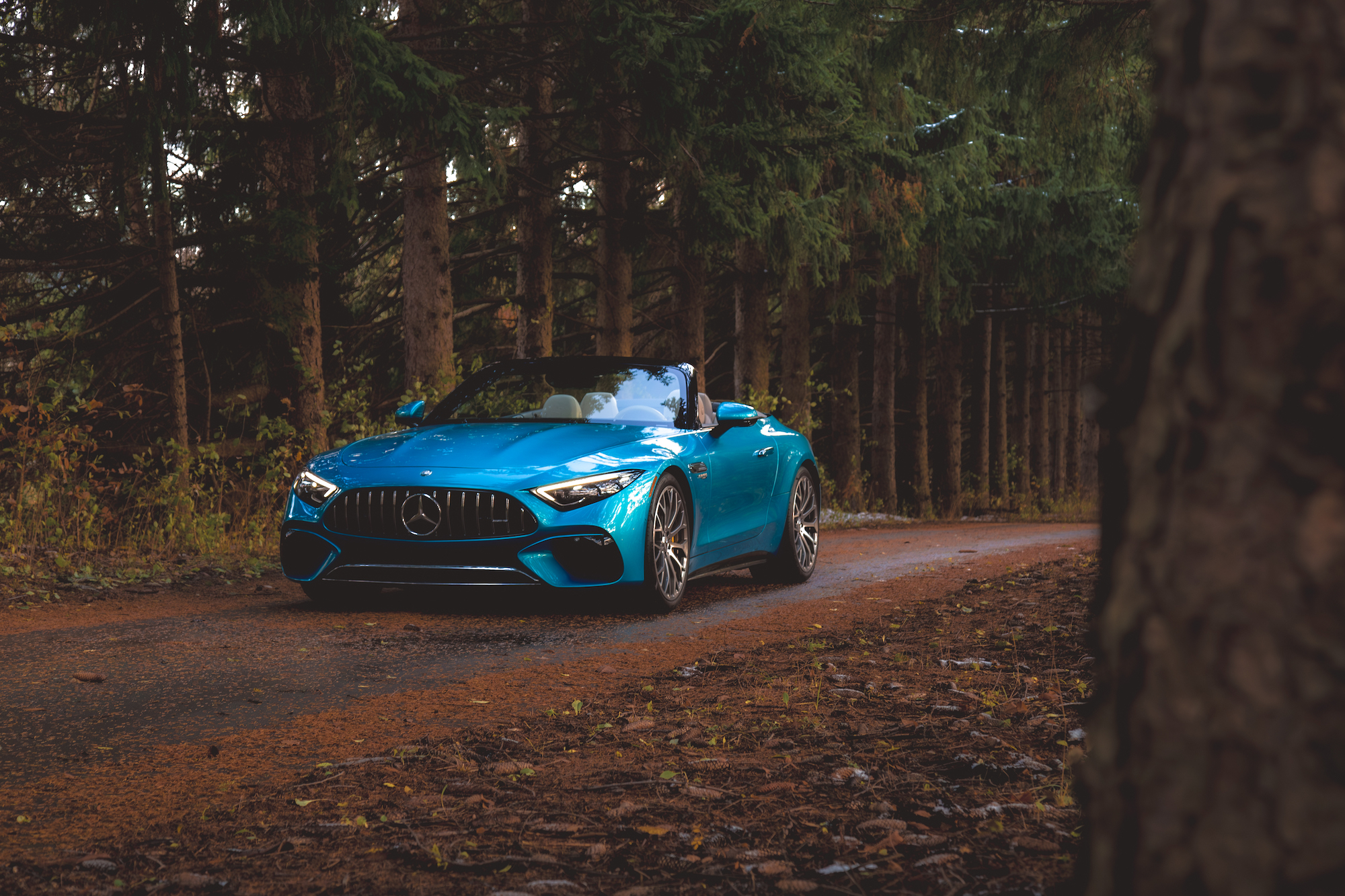

Leave a Reply